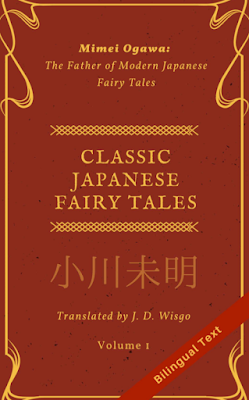Ovid's "Metamorphoses"
“My purpose is to tell of bodies which have been transformed into shapes of a different kind... and spin an unbroken thread of verse” – from Ovid's “Metamorphoses”
Ovid’s “Metamorphoses”, first published in 8 AD, is sometimes considered an epic, an epic poem, mythology, legend, or even a fairy-tale or a piece of folklore. Most have agreed that this literary work defies genre. “Metamorphoses” encompasses all the literary descriptions listed above, and is essentially a world-building composition that tells over two-hundred and fifty stories of transformation – transformations of mortals and gods alike – into elements of nature such as plants, animals, and other phenomena. Ovid, born in 43 BC, is an Italian storyteller, and today, it is still a mystery as to why he died in exile from Rome. His “Metamorphoses” contains re-tellings from the Latin and Greek tradition.
For most people who read this text, a lot of names will be familiar, such as the goddess Diana, Hercules, Arachne, King Midas, Apollo, Narcissus, Mars, Venus, Jupiter, Athena, Anemone, Icarus, Achilles… and more. These names have been remembered by modern artists and poets, filmmakers, and publishers of comics and other media. Besides the characters themselves, some of the stories prove more revealing than others, particularly because of their English-language counterparts. Arachnophobia, for example, which means a person’s fear of spiders, is echoed in a story about Arachne, an extremely talented weaver, who was challenged to a weaving contest versus the goddess Athena, also known for her art of weaving. Arachne won the contest easily with her intense and beautiful work of art, and of course this angered the goddess Athena. Arachne hanged herself, but Athena made her live on as a spider, in punishment for her arrogance and talent. So too is the echo of narcissism, which is synonymous with extreme vanity. Narcissus, the son of a god and a nymph, was extremely handsome, so much so that he scorned everyone who fell for his beauty. The goddess Nemesis punished him for his scorn by guiding him to a river where he finally saw his own reflection. Upon doing so, he fell in love with himself, which was an eternal torture for him because that love could not be reconciled with a mere reflection. For these names and their stories, “Metamorphoses” offers a strong foundation for many abstract and concrete concepts encountered daily.
Fascinating tales such as those are presented throughout the “Metamorphoses”, and they often depict both human and godly passion, whether love, lust, jealousy, anger, guilt or any other that drives them to do abominable things, heroic things, magical things, or amazing things. There are transformations as blessings to give freedom from pain, such as a human becoming hawk. There are transformations born of pain, such as the sufferer who becomes a river or lake. There are transformations of punishment, such as man into oxen or cow. There are sinful, abnormal emotions that rise from the darkest parts of the soul; a sister madly in love with her brother, or a daughter who lusts after her father. The stories that come with these are painful and often nauseating, and very believable. There are enchanting love stories, such as the story of a man, unimpressed by the women he met, who carved his own statue of a woman which was so gorgeous and lifelike that he fell in love with his own creation. Praying to the gods, he asked for a woman like his creation. Instead, the gods granted his wish by making his statue real. There is the story of Ceyx and Alcyone, mortals who turned into real love birds. There is the story of the maiden Caenis, who was given the blessing from the gods to become a man in order to escape rape. There is the house where Rumor lives, with all her doors and windows open the year round. There are battle scenes with such unimaginable violence; a mother killing her son for food, unaware that is was her son turned animal by the hands of the gods.
Ovid’s “Metamorphoses”, translated from Latin into English, might be difficult for the contemporary English-speaking reader (as it was for me). But Ovid’s thick descriptions and enchanting poetry carry through centuries and centuries withstanding all language, cultural, and historical boundaries, fresh as ever. There are battle scenes with such violence that perhaps might have only been regarded for television audiences in the 21st century. However, the big difference is in Ovid’s scenes - they take place in a land bountiful with natural landscapes, natural food, the wilderness, the heavens, unending earthly resources, mineral wealth, clear skies and clear waters – which is a place always worth remembering.




Comments
Post a Comment